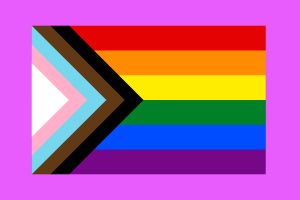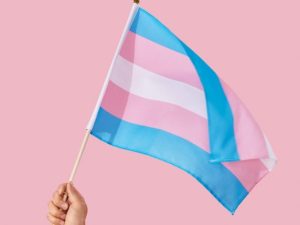CW – Holocaust, AIDS, Homophobia
This LGBT+ History Month we have been inspired reading about people and groups within the LGBTQ+ movement and wanted to share more about the design of the Andro and Eve logo and its links to LGBTQ+ History. Read on for an exploration of colour, symbology and LGBTQ+ representation in history!

We were inspired by this fascinating Twitter thread by @AlexPetrovnia that delved into the history of trans lives and the colour pink, and its associations. During WW1, propaganda led to boys being dressed in pink, and then 1920’s flappers wore pink to appear more masculine. It was not until the Nazi use of pink triangles to mark out homosexuals during the holocaust, that pink was associated with queerness, and then femininity. History loves a bit of revisionism, but we must not forget.
The image to the left showing two women kissing is from around 1916 -1918, when during WW1, women took over jobs traditionally done by men. Here in Sheffield, women became munitions workers at the local steel factories.
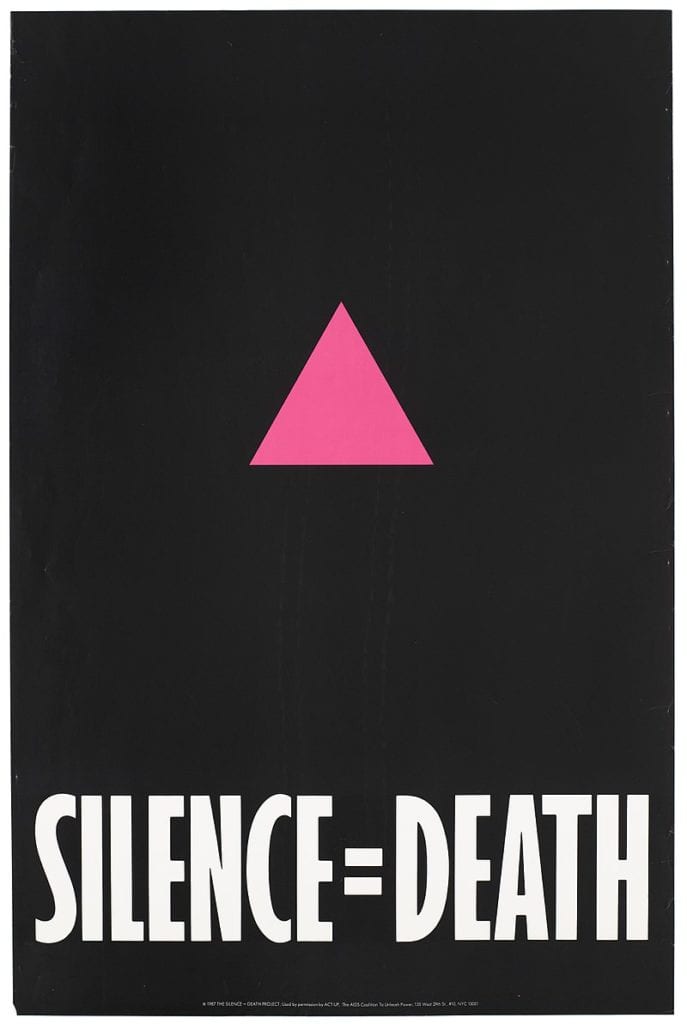
The pink triangle has been reclaimed over the years by many in the LGBTQ+ community as a symbol of resistance, most significantly with ACT UP (AIDS Coalition to Unleash Power) formed in 1987, to raise awareness of and fight for the rights and healthcare for those with HIV / AIDS. They inverted the pink triangle and added the slogan Silence = Death.
The pink triangle is also used as a symbol of remembrance as with San Francisco Pride where, since 1996, a 200ft tall triangle is installed upon the Twin Peaks every year.
Latterly, the Rainbow Pride flag has been more commonly associated as symbol for the LGBTQ+ community, but triangles and pink triangles are is still often seen in queer imagery.
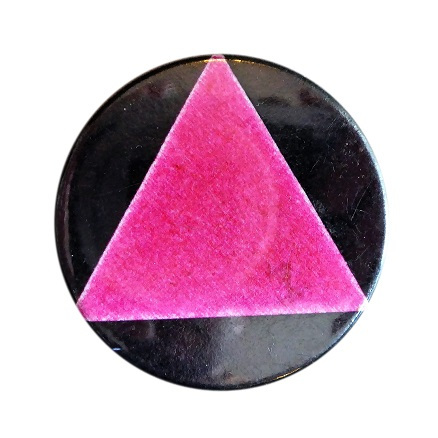
It is important to note that during the holocaust, homosexual women, along with sex workers, Romani, and the homeless, were given the ‘asocial’ badge of black triangle. The grouping of lesbians with others under this badge and widespread use of the pink triangle feeds into a common observation about the erasure of lesbian herstory. This collection of pin badges by the former manager of Gays the Word Bookshop in London, (Paud’s Pins) shows a huge range of LGBTQ+ symbols including plenty use of the triangle symbol, labrys and the lambda.
It is this LGBTQ+ History we drew upon when redesigning the Andro and Eve logo in 2017. You’ll notice that our recent run of logo tote bags uses a pink triangle, but most often our triangle is displayed in a lavender or violet colour. No coincidence!
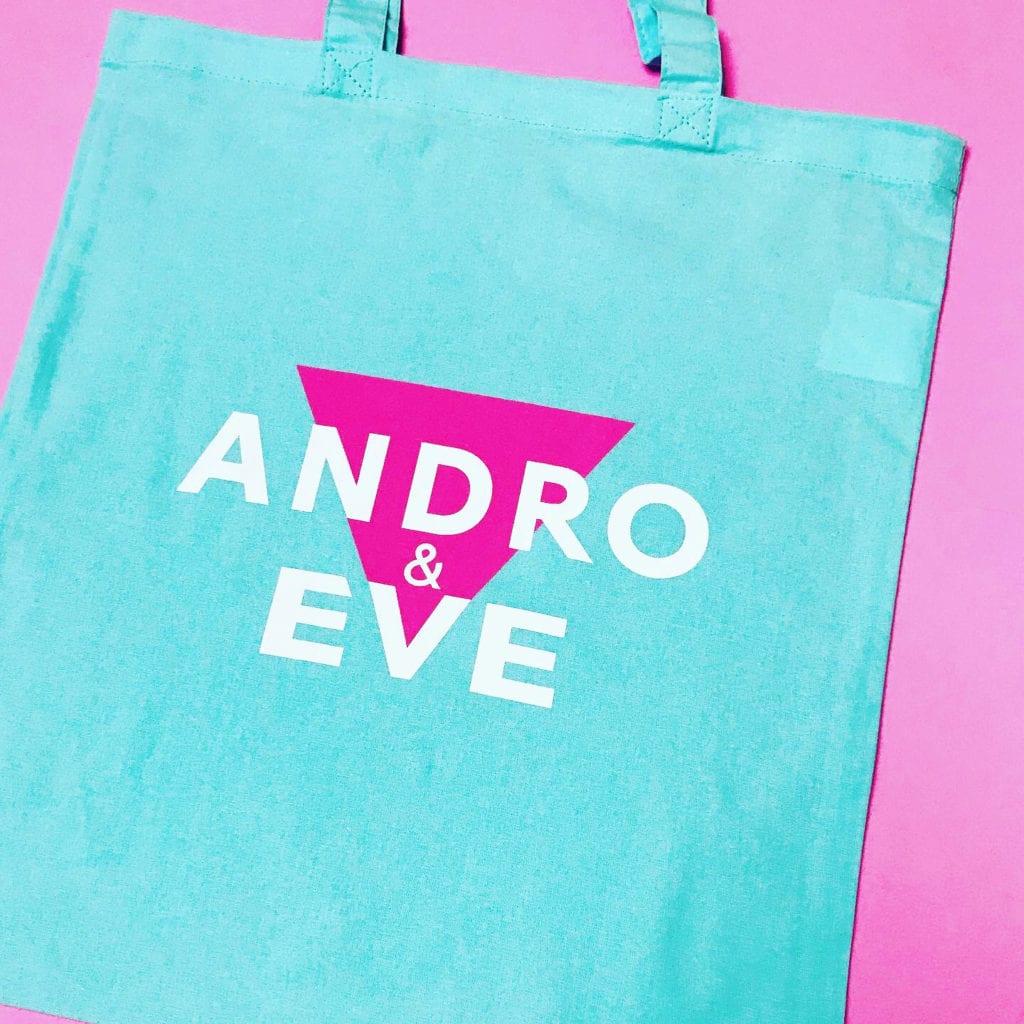
Violets have been associated with lesbians since 600BC, when the ancient Greek poet Sappho would often write about violets and other purple flowers. In 1930’s New York, lesbians would give posies of violets to women they were hoping to woo, a practice inspired by the play The Captive, which was closed down after 5 months on Broadway in 1927. In it, one female character sends bunches of violets to another character. (1) After this censorship, Parisian lesbians wore a violet on their lapel to show solidarity.
Violet was also one of the original colours in the Pride rainbow flag.
Similarlarly, lavender has been associated with queer life since the late 19th century with the art movement Aestheticism promoting beauty and ‘art for arts sake’, with fans of this movement labelled ‘effeminate’. Oscar Wilde frequently spoke about his ‘purple afternoons’ with rent boys. In the 1920’s, a ‘lavender streak’ was used in North American slang to mean ‘male on male’ love,(2) and later a ‘lavender marriage’ helped Hollywood actors hide their sexuality in line with morality clauses in contracts the 1920’s and 30’s. The lavender scare of the 1950’s saw American homosexual government employees fired as part of an anti communist campaign by the US government.

Perhaps even more well known, are the Lavender Menaces in the USA. North American author of ‘The Feminine Mystique’, Betty Frieden asserted that ‘lavender menaces’ would ruin the feminist movement’s second wave. In response Rita Mae Brown led the ‘Lavender Menace Zap’ at the 2nd Congress to Unite Women in 1970, where a group of lesbians infiltrated the conference, wearing lavender hand – dyed T Shirts with ‘Lavender Menace’ printed on them and handed out leaflets stating their cause. This moment would help catalyze lesbians as an important part of the women’s movement and help make it more intersectional. You can read more about these radical lesbians on the brilliant blog, Dressing Dykes.
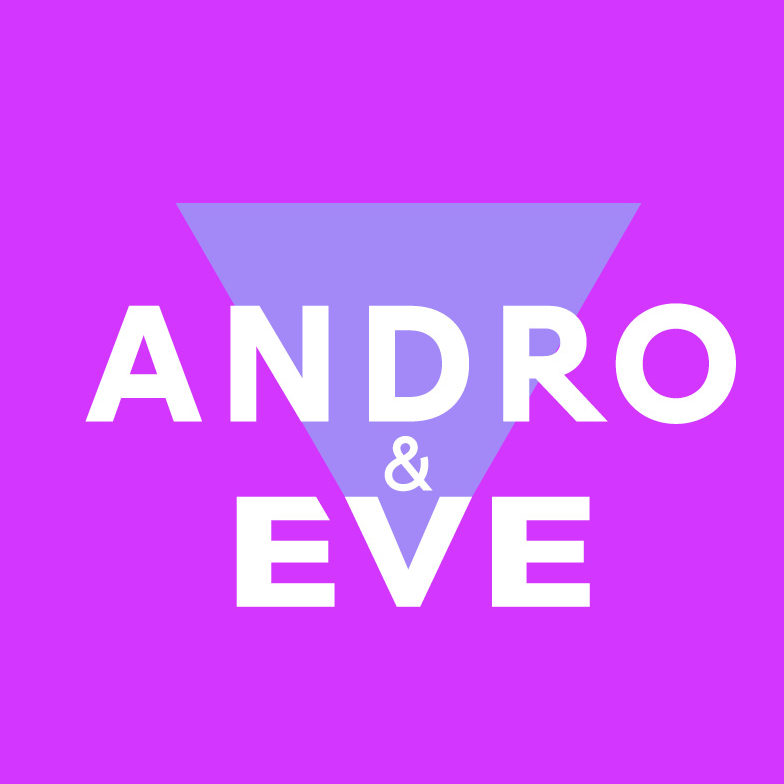
Lavender and purple have also often been associated with queer communities owing to the fact it is the colour you get when mixing traditional ‘masculine’ blue with ‘feminine’ pink. And so we come full circle with this blog, which was inspired by learning how pink came to be associated with boys, then girls!
We recognise the pain of so many LGBTQ+ people, and the erasure of women, trans and gender expansive people from our past. Andro and Eve, in name and logo, is both about reclaiming a hidden history and finding playfulness, joy and most importantly pride, in our lives and culture. We’re proud to carry on this spirit of making space and sharing marginalised LGBTQ+ stories.
Our Limited edition Logo tees are soon to be part of LGBTQ+ History too! If you fancy getting one, we’ve only got a limited amount left, so head on over to the shop to bag yours now!

References
(1) From Sherrie Innes – National Women’s Studies Association Journal (referenced from JStor Daily).
(2) Most famously used in Carl Sandburg’s biography of Abraham Lincoln.
Further Reading

